Table of Contents
- Introduction
- Core Materials and Aluminium Alloys Used
- Step-by-Step Breakdown: From Aluminium Ingot to Finished Tray
3.1. Melting and Casting
3.2. Rolling and Annealing
3.3. Lubrication, Coating, and Sheet Preparation
3.4. Tray Forming and Shaping
3.5. Edge Curling, Trimming, and Surface Finishing - Automation and Quality Assurance in Modern Plants
4.1. Robotics and Process Automation
4.2. Inline Inspection and Testing
4.3. Traceability and Food Safety - Environmental Impact and Sustainable Practices
5.1. Recycling of Aluminium Scrap
5.2. Closed-Loop Manufacturing
5.3. Energy Consumption Benchmarks - Cost Analysis and Global Market Trends
- Conclusion and Next Steps
- Tables
- References
- Meta Information
Introduction
Disposable aluminium food trays have become a mainstay in food service, catering, and retail environments worldwide. Their combination of light weight, strength, hygiene, and recyclability make them a go-to solution for both hot and cold food packaging. But how exactly are these ubiquitous trays manufactured, and what makes their production process unique compared to other forms of food packaging?
This article dives deep into the manufacturing process of disposable aluminium food trays, outlining the critical steps, key materials, automation advances, and environmental considerations that define the industry today. We will walk through every stage, from the initial aluminium ingots to the finished, ready-to-use tray—demystifying technical terms and offering relatable analogies along the way. Tables and up-to-date data will ground the discussion, and real-world examples will highlight best practices.
Elka Mehr Kimiya is a leading manufacturer of Disposable aluminium Food Containers, Aluminium rods, alloys, conductors, ingots, and wire in the northwest of Iran equipped with cutting-edge production machinery. Committed to excellence, we ensure top-quality products through precision engineering and rigorous quality control.
1. Core Materials and Aluminium Alloys Used
Background and Definitions
The first building block in manufacturing disposable aluminium food trays is the aluminium alloy itself. Most trays are made from special grades of aluminium tailored for food contact, durability, and easy recycling. The most commonly used alloys are from the 8000 series (such as 8011, 8006, and 3003¹), selected for their balance of formability, strength, and food safety.
Mechanisms & Analysis
Pure aluminium is too soft for most tray applications. Alloying elements like iron, silicon, and manganese are added to enhance mechanical strength and resist cracking during forming. These alloys are designed to be rolled into thin sheets without losing structural integrity or corroding when in contact with acidic or salty foods².
Real-World Examples
For instance, 8011 alloy is widely chosen for its superior barrier properties and ability to withstand baking temperatures. In the Middle East and Europe, 8006 is also popular, prized for its flexibility and cost-effectiveness.
Data & Evidence
Table 1.1: Typical Alloy Compositions Used for Food Trays (Data as of June 2025)¹⁻²
| Alloy | Al (%) | Fe (%) | Si (%) | Mn (%) | Other Elements | Key Properties |
|---|---|---|---|---|---|---|
| 8011 | 97.4 | 0.7 | 0.6 | 0.1 | Ti, Cu | Good barrier, high formability |
| 8006 | 98.2 | 1.0 | 0.3 | 0.2 | Mg | High flexibility, ductility |
| 3003 | 96.8 | 0.7 | 0.6 | 1.2 | Cu | Corrosion resistance, workability |
2. Step-by-Step Breakdown: From Aluminium Ingot to Finished Tray
2.1 Melting and Casting
Background and Definitions
Production starts with the melting of primary or recycled aluminium in large furnaces. Recycled content often makes up 60% or more of the input metal, aligning with circular economy goals³. The molten aluminium is then cast into large blocks called slabs.
Mechanisms & Analysis
Casting is performed under controlled atmospheric conditions to minimize impurities and gas inclusions. Precise temperature management is vital—too hot, and the alloy oxidizes; too cold, and the metal solidifies unevenly.
Real-World Examples
A typical modern plant recycles in-house scrap directly back into the melt, which both saves energy and lowers raw material costs.
Data & Evidence
Table 2.1: Aluminium Tray Production—Material Sourcing Mix (Data as of June 2025)³
| Source | Share (%) | Environmental Note |
|---|---|---|
| Primary Aluminium | 35 | Higher energy, lower impurity |
| Recycled Aluminium | 60 | Lower energy, closes loop |
| Process Scrap Recycled | 5 | In-house, zero waste |
2.2 Rolling and Annealing
Background and Definitions
Once cooled, slabs are hot-rolled and then cold-rolled into long, thin coils. This step determines the tray’s final thickness, surface finish, and mechanical properties.
Mechanisms & Analysis
Rolling is done in several passes, with thickness measured to the micrometer. Annealing (heat treatment) relieves internal stresses and boosts malleability, allowing the aluminium to be formed into complex tray shapes without cracking⁴.
Real-World Examples
The rolling mill is the beating heart of any tray factory—machines stretch for tens of meters, handling thousands of tons of metal per year.
Data & Evidence
Table 2.2: Standard Aluminium Tray Sheet Thickness Ranges⁴
| Application | Thickness (mm) |
|---|---|
| Light-duty trays | 0.04–0.06 |
| Standard food trays | 0.07–0.10 |
| Heavy-duty catering | 0.11–0.15 |
2.3 Lubrication, Coating, and Sheet Preparation
Background and Definitions
Before forming, the aluminium sheet is cleaned, degreased, and sometimes coated with a thin layer of food-grade lubricant or lacquer. These coatings serve as both process aids and barriers for food safety.
Mechanisms & Analysis
The lubricant reduces friction during forming, while the lacquer can prevent reaction between acidic foods and aluminium. Sheets are then cut into blanks, typically by high-speed presses.
Real-World Examples
Some manufacturers use water-based lubricants to avoid hydrocarbon residues and improve recyclability.
2.4 Tray Forming and Shaping
Background and Definitions
Tray forming is the most visible and dynamic part of the process. Sheets are stamped or drawn into shape by multi-stage presses and matched dies.
Mechanisms & Analysis
Forming presses can run at up to 200 strokes per minute. The process involves deep drawing, where the sheet is stretched and bent into its final geometry. Computer-controlled sensors ensure that every tray meets exact specifications.
Real-World Examples
In a busy plant, it is common to see hundreds of thousands of trays produced daily, with line operators monitoring output via digital dashboards.
2.5 Edge Curling, Trimming, and Surface Finishing
Background and Definitions
After shaping, the tray’s edges are curled to remove sharpness and increase structural strength. Trimming removes excess material, and the trays undergo a final surface finish inspection.
Mechanisms & Analysis
Edge curling is done with precision rollers, while trimming is achieved with rotary blades or laser cutters. Some premium trays may undergo embossing for branding or stacking features.
Real-World Examples
Edge curling not only protects users from cuts but also allows for secure lidding during food storage or delivery.
3. Automation and Quality Assurance in Modern Plants
3.1 Robotics and Process Automation
Background and Definitions
Modern tray plants rely heavily on automation for efficiency and product consistency. Robotics handle stacking, packaging, and even visual inspection.
Mechanisms & Analysis
Automation systems use PLCs (Programmable Logic Controllers) to synchronize presses, conveyors, and packaging robots. Automated vision systems detect defects faster than human eyes⁵.
Real-World Examples
Some high-volume manufacturers have reduced manual labor by 70%, freeing up workers for higher-skilled roles like machine maintenance.
3.2 Inline Inspection and Testing
Background and Definitions
Inline inspection involves real-time monitoring of tray thickness, shape, and surface quality.
Mechanisms & Analysis
Laser gauges, high-speed cameras, and ultrasonic sensors check every tray, flagging non-conforming units for removal. Sampling is also performed for laboratory testing (e.g., migration of aluminium ions under acidic conditions).
Real-World Examples
A leading European plant uses AI-based algorithms to correlate defect data with machine parameters, reducing scrap rates by 30%.
3.3 Traceability and Food Safety
Background and Definitions
Traceability is crucial for food-contact materials. Each tray batch is barcoded or labeled for origin tracking.
Mechanisms & Analysis
Digital records link trays back to their production run, raw material lot, and machine settings. This system enables rapid recall and compliance with food safety standards like ISO 22000⁶.
Real-World Examples
Major exporters require full traceability reports as a condition of doing business with global food chains.
4. Environmental Impact and Sustainable Practices
4.1 Recycling of Aluminium Scrap
Background and Definitions
Aluminium is the world’s most recyclable industrial material. Tray offcuts and rejected units are returned to the melt for reuse.
Mechanisms & Analysis
Recycling aluminium uses 95% less energy than refining new metal from ore, dramatically reducing greenhouse gas emissions⁷.
Real-World Examples
In 2024, leading manufacturers recycled up to 98% of process scrap, achieving near-zero waste targets.
4.2 Closed-Loop Manufacturing
Background and Definitions
Closed-loop manufacturing refers to the continuous reuse of scrap generated during production, ensuring no valuable material leaves the process.
Mechanisms & Analysis
Plants equipped with onsite melting and casting can convert all in-process scrap to new feedstock, shrinking their environmental footprint.
Real-World Examples
Elka Mehr Kimiya employs closed-loop recycling to supply up to 70% of its feedstock from recovered materials, dramatically improving sustainability metrics.
4.3 Energy Consumption Benchmarks
Background and Definitions
Aluminium tray production is energy-intensive, but modern plants employ efficiency measures.
Mechanisms & Analysis
Investments in heat recovery, high-efficiency furnaces, and renewable energy (e.g., solar panels on plant roofs) can cut energy use per tray by 40%⁸.
Real-World Examples
A 2024 survey found that plants certified for ISO 50001 energy management consumed only 8.2 MJ of energy per kilogram of tray produced, compared to an industry average of 13.5 MJ/kg⁸.
Table 4.1: Energy Consumption Benchmarks in Aluminium Tray Manufacturing (Data as of June 2025)
| Plant Type | Energy Use (MJ/kg) | Renewable Share (%) | Notes |
|---|---|---|---|
| Conventional | 13.5 | 10 | Older, less efficient |
| Semi-modern | 10.7 | 30 | Some upgrades |
| ISO 50001 Certified | 8.2 | 50 | Best-in-class |
5. Cost Analysis and Global Market Trends
Background and Definitions
Manufacturing costs for disposable aluminium trays are shaped by raw material prices, labor costs, energy consumption, automation, and logistics.
Mechanisms & Analysis
Aluminium prices are volatile, often tracking global commodity trends. Labor and energy savings from automation can offset raw material fluctuations. Logistical costs are minimized by compact packaging and stacking innovations⁹.
Real-World Examples
Between 2023 and 2025, global demand for disposable aluminium food trays grew by 6% annually, driven by food delivery, catering, and meal-prep businesses. Asia and Europe lead in production, but demand is rising fastest in the Middle East and Africa¹⁰.
Table 5.1: Estimated Manufacturing Cost Structure (Data as of June 2025)⁹
| Cost Category | Share (%) | Notes |
|---|---|---|
| Aluminium Raw Material | 55 | Most significant input |
| Labor | 12 | Lower in automated plants |
| Energy | 14 | Variable, offset by renewables |
| Packaging/Logistics | 9 | Stacking reduces cost |
| Maintenance/Depreciation | 6 | Machinery-intensive process |
| Overheads | 4 | QA, certification, administration |
6. Conclusion and Next Steps
The journey from molten aluminium to the finished disposable food tray is both a marvel of modern engineering and a testament to the industry’s commitment to sustainability and food safety. Today’s manufacturing plants integrate advanced alloys, precise automation, robust quality controls, and closed-loop recycling to deliver trays that are not only practical but also environmentally responsible.
For buyers and distributors, understanding the nuances of tray production allows for more informed purchasing and stronger partnerships with manufacturers. Looking ahead, continued advances in automation, energy efficiency, and smart recycling will shape the future of disposable aluminium food tray manufacturing, further closing the loop between convenience and sustainability.
7. Tables
Table 1.1: Typical Alloy Compositions Used for Food Trays
Table 2.1: Aluminium Tray Production—Material Sourcing Mix
Table 2.2: Standard Aluminium Tray Sheet Thickness Ranges
Table 4.1: Energy Consumption Benchmarks in Aluminium Tray Manufacturing
Table 5.1: Estimated Manufacturing Cost Structure
8. References
- European Aluminium Association. “Aluminium Foil and Tray Alloys.” https://european-aluminium.eu/
- The Aluminum Association. “Aluminum Alloy Selection.” https://www.aluminum.org/
- International Aluminium Institute. “Recycling in Aluminium Production.” https://international-aluminium.org/
- Granta Design. “Processing of Aluminium Sheet and Foil.” https://grantadesign.com/
- World Economic Forum. “Automation in Food Packaging.” https://www.weforum.org/
- ISO. “ISO 22000 Food Safety Management.” https://www.iso.org/iso-22000-food-safety-management.html
- U.S. EPA. “Benefits of Aluminium Recycling.” https://www.epa.gov/
- EnergyStar. “Energy Efficiency in Metal Processing.” https://www.energystar.gov/
- Statista. “Cost Structure of Aluminium Packaging.” https://www.statista.com/
- Smithers. “Global Disposable Food Container Markets, 2025.” https://www.smithers.com/


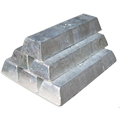
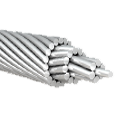

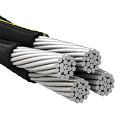
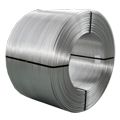
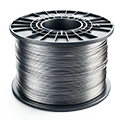
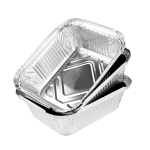








No comment